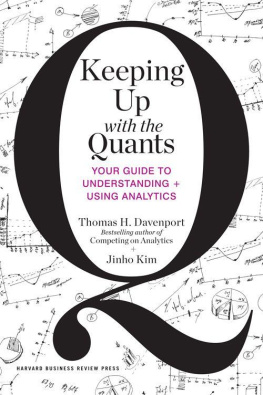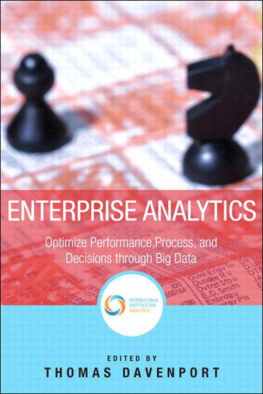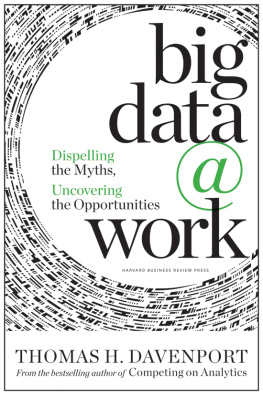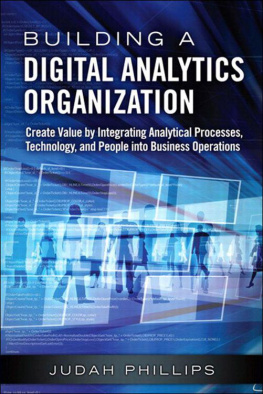Thomas H. Davenport - Keeping Up with the Quants: Your Guide to Understanding and Using Analytics
Here you can read online Thomas H. Davenport - Keeping Up with the Quants: Your Guide to Understanding and Using Analytics full text of the book (entire story) in english for free. Download pdf and epub, get meaning, cover and reviews about this ebook. year: 2013, publisher: Harvard Business Review Press, genre: Business. Description of the work, (preface) as well as reviews are available. Best literature library LitArk.com created for fans of good reading and offers a wide selection of genres:
Romance novel
Science fiction
Adventure
Detective
Science
History
Home and family
Prose
Art
Politics
Computer
Non-fiction
Religion
Business
Children
Humor
Choose a favorite category and find really read worthwhile books. Enjoy immersion in the world of imagination, feel the emotions of the characters or learn something new for yourself, make an fascinating discovery.
- Book:Keeping Up with the Quants: Your Guide to Understanding and Using Analytics
- Author:
- Publisher:Harvard Business Review Press
- Genre:
- Year:2013
- Rating:4 / 5
- Favourites:Add to favourites
- Your mark:
Keeping Up with the Quants: Your Guide to Understanding and Using Analytics: summary, description and annotation
We offer to read an annotation, description, summary or preface (depends on what the author of the book "Keeping Up with the Quants: Your Guide to Understanding and Using Analytics" wrote himself). If you haven't found the necessary information about the book — write in the comments, we will try to find it.
Welcome to the age of data. No matter your interests (sports, movies, politics), your industry (finance, marketing, technology, manufacturing), or the type of organization you work for (big company, nonprofit, small start-up)your world is awash with data.
As a successful manager today, you must be able to make sense of all this information. You need to be conversant with analytical terminology and methods and able to work with quantitative information. This book promises to become your quantitative literacy guidehelping you develop the analytical skills you need right now in order to summarize data, find the meaning in it, and extract its value.
In Keeping Up with the Quants, authors, professors, and analytics experts Thomas Davenport and Jinho Kim offer practical tools to improve your understanding of data analytics and enhance your thinking and decision making. Youll gain crucial skills, including:
How to formulate a hypothesis
How to gather and analyze relevant data
How to interpret and communicate analytical results
How to develop habits of quantitative thinking
How to deal effectively with the quants in your organization
Big data and the analytics based on it promise to change virtually every industry and business function over the next decade. If you dont have a business degree or if you arent comfortable with statistics and quantitative methods, this book is for you. Keeping Up with the Quants will give you the skills you need to master this new challengeand gain a significant competitive edge.
Thomas H. Davenport: author's other books
Who wrote Keeping Up with the Quants: Your Guide to Understanding and Using Analytics? Find out the surname, the name of the author of the book and a list of all author's works by series.














